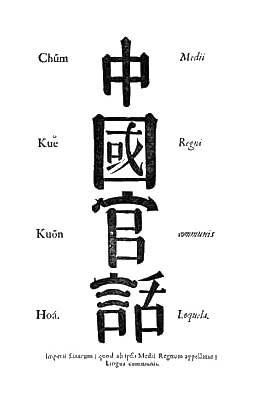|
Hidden Track (EP)
''Hidden Track'' () is the second EP by Taiwanese singer Jay Chou Jay Chou ( zh, t=е‘Ёжќ°еЂ«, s=е‘Ёжќ°дј¦, poj=Chiu KiaМЌt-lГ»n, p=ZhЕЌu JiГ©lГєn, first=t, w=Chou Chieh-lun; born January 18, 1979) is a Taiwanese singer, songwriter, record producer, rapper, actor, and television personality. Dubbed the " King ..., released on 11 November 2003 under label Alfa Music. ''JVR Music''. 11 November 2003. Retrieved 2011-12-22 Track listing CD # "Orbit" (и»Њи·Ў) – 5:22 # "Broken String" (ж–·дє†зљ„еј¦) – 4:53 # "Orbit" (Instrumental) – 5:22 # "Broken String" (Instrumental) – 4:53 DVD # "In the Name of Father" (以父之名) # "Coward" (懦夫) # "Sunny Day" (晴天) # "Class 3-2" (三年二зЏ) # "East Wind Breaks" (жќ±йўЁз ґ) # "You Hear Me" (е¦іиЃЅ ...[...More Info...] [...Related Items...] OR: [Wikipedia] [Google] [Baidu] |
Jay Chou
Jay Chou ( zh, t=周杰倫, s=周杰伦, poj=Chiu Kia̍t-lûn, p=Zhōu Jiélún, first=t, w=Chou Chieh-lun; born January 18, 1979) is a Taiwanese singer, songwriter, record producer, rapper, actor, and television personality. Dubbed the " King of Mandopop", and having sold over 30 million records, Chou is one of the best-selling artists in Taiwan and is known for his work with lyricist Vincent Fang, with whom he has frequently collaborated on his music. In 2000, Chou released his debut studio album, '' Jay'' (2000), under the record company Alfa Music. Chou rose to fame with the release of his second studio album, '' Fantasy (范特西)'' (2001), which combined Western and Eastern music styles. The album won five Golden Melody Awards, including Album of the Year. He has since further released twelve more studio albums, spawning a string of hit singles and gaining significant prominence in Asian communities such as Taiwan, Hong Kong SAR, China Mainland, Malaysia, and Singapo ... [...More Info...] [...Related Items...] OR: [Wikipedia] [Google] [Baidu] |
Mandopop
Mandopop or Mandapop refers to Mandarin popular music. The genre has its origin in the jazz-influenced popular music of 1930s Shanghai known as Shidaiqu; with later influences coming from Japanese enka, Hong Kong's Cantopop, Taiwan's Hokkien pop, and in particular the Campus Song folk movement of the 1970s. 'Mandopop' may be used as a general term to describe popular songs performed in Mandarin. Though Mandopop predates Cantopop, the English term was coined around 1980 after "Cantopop" became a popular term for describing popular songs in Cantonese. "Mandopop" was used to describe Mandarin-language popular songs of that time, some of which were versions of Cantopop songs sung by the same singers with different lyrics to suit the different rhyme and tonal patterns of Mandarin. Mandopop is categorized as a subgenre of commercial Chinese-language music within C-pop. Popular music sung in Mandarin was the first variety of popular music in Chinese to establish itself as a viable ... [...More Info...] [...Related Items...] OR: [Wikipedia] [Google] [Baidu] |
Standard Chinese
Standard Chinese ()—in linguistics Standard Northern Mandarin or Standard Beijing Mandarin, in common speech simply Mandarin, better qualified as Standard Mandarin, Modern Standard Mandarin or Standard Mandarin Chinese—is a modern standardized form of Mandarin Chinese that was first developed during the Republican Era (1912‒1949). It is designated as the official language of mainland China and a major language in the United Nations, Singapore, and Taiwan. It is largely based on the Beijing dialect. Standard Chinese is a pluricentric language with local standards in mainland China, Taiwan and Singapore that mainly differ in their lexicon. Hong Kong written Chinese, used for formal written communication in Hong Kong and Macau, is a form of Standard Chinese that is read aloud with the Cantonese reading of characters. Like other Sinitic languages, Standard Chinese is a tonal language with topic-prominent organization and subject–verb–object (SVO) word order. Co ... [...More Info...] [...Related Items...] OR: [Wikipedia] [Google] [Baidu] |
Sony Music
Sony Music Entertainment (SME), also known as simply Sony Music, is an American multinational music company. Being owned by the parent conglomerate Sony Group Corporation, it is part of the Sony Music Group, which is owned by Sony Entertainment and managed by the American umbrella division of Sony. It was originally founded in 1929 as American Record Corporation and renamed as Columbia Recording Corporation in 1938, following its acquisition by the Columbia Broadcasting System. In 1966, the company was reorganized to become CBS Records, and Sony Corporation bought the company in 1988, renaming it under its current name in 1991. In 2004, Sony and Bertelsmann established a 50-50 joint venture known as Sony BMG, which transferred the businesses of Sony Music and Bertelsmann Music Group into one entity. However, in 2008, Sony acquired Bertelsmann's stake, and the company reverted to the Sony Music name shortly after; the buyout allowed Sony to acquire all of BMG's labels, whic ... [...More Info...] [...Related Items...] OR: [Wikipedia] [Google] [Baidu] |
Common Jasmin Orange
''Common Jasmine Orange'' () is the fifth studio album by Taiwanese singer Jay Chou Jay Chou ( zh, t=е‘Ёжќ°еЂ«, s=е‘Ёжќ°дј¦, poj=Chiu KiaМЌt-lГ»n, p=ZhЕЌu JiГ©lГєn, first=t, w=Chou Chieh-lun; born January 18, 1979) is a Taiwanese singer, songwriter, record producer, rapper, actor, and television personality. Dubbed the " King ..., released on 3 August 2004 by Alfa Music. The album was nominated for six Golden Melody Awards. The album won for an IFPI Hong Kong Top Sales Music Award for Best Selling Mandarin Album of the Year. According to IFPI, The album is also listed at number 43 of 2004's global best-selling albums. The tracks, "Common Jasmine Orange", "Excuse", and "Wounds of War", are listed at number 1, number 10, and number 88 respectively on the 2004's Hit FM Top 100 Singles of the Year chart. [...More Info...] [...Related Items...] OR: [Wikipedia] [Google] [Baidu] |
Taiwanese People
Taiwanese people may be generally considered the people of Taiwan who share a common culture, ancestry and speak Taiwanese Mandarin, Hokkien, Hakka or indigenous Taiwanese languages as a mother tongue. Taiwanese people may also refer to the indigenous peoples of the areas under the control of the Government of the Republic of China since 1945, including Penghu as well as Kinmen and Matsu Islands that collectively form its streamlined Fujian Province (see Taiwan Area). However, the inhabitants of Kinmen and the Matsu themselves may not consider the "Taiwanese" label to be accurate as they are a part of Fujian and not Taiwan. They have a distinctive identity from that of the Taiwanese; viewing themselves as Kinmenese or Matsunese, respectively, or as simply Chinese. At least three competing (occasionally overlapping) paradigms are used to identify someone as a Taiwanese person: nationalist criteria, self-identification (including the concept of "New Taiwanese") criteria and ... [...More Info...] [...Related Items...] OR: [Wikipedia] [Google] [Baidu] |
2003 EPs
3 (three) is a number, numeral and digit. It is the natural number following 2 and preceding 4, and is the smallest odd prime number and the only prime preceding a square number. It has religious or cultural significance in many societies. Evolution of the Arabic digit The use of three lines to denote the number 3 occurred in many writing systems, including some (like Roman and Chinese numerals) that are still in use. That was also the original representation of 3 in the Brahmic (Indian) numerical notation, its earliest forms aligned vertically. However, during the Gupta Empire the sign was modified by the addition of a curve on each line. The Nāgarī script rotated the lines clockwise, so they appeared horizontally, and ended each line with a short downward stroke on the right. In cursive script, the three strokes were eventually connected to form a glyph resembling a with an additional stroke at the bottom: ३. The Indian digits spread to the Caliphate in the 9th ... [...More Info...] [...Related Items...] OR: [Wikipedia] [Google] [Baidu] |
Mandopop EPs
Mandopop or Mandapop refers to Mandarin popular music. The genre has its origin in the jazz-influenced popular music of 1930s Shanghai known as Shidaiqu; with later influences coming from Japanese enka, Hong Kong's Cantopop, Taiwan's Hokkien pop, and in particular the Campus Song folk movement of the 1970s. 'Mandopop' may be used as a general term to describe popular songs performed in Mandarin. Though Mandopop predates Cantopop, the English term was coined around 1980 after "Cantopop" became a popular term for describing popular songs in Cantonese. "Mandopop" was used to describe Mandarin-language popular songs of that time, some of which were versions of Cantopop songs sung by the same singers with different lyrics to suit the different rhyme and tonal patterns of Mandarin. Mandopop is categorized as a subgenre of commercial Chinese-language music within C-pop. Popular music sung in Mandarin was the first variety of popular music in Chinese to establish itself as a viable ind ... [...More Info...] [...Related Items...] OR: [Wikipedia] [Google] [Baidu] |
Jay Chou Albums
A jay is a member of a number of species of medium-sized, usually colorful and noisy, passerine birds in the Crow family, Corvidae. The evolutionary relationships between the jays and the magpies are rather complex. For example, the Eurasian magpie seems more closely related to the Eurasian jay than to the East Asian blue and green magpies, whereas the blue jay is not closely related to either. Systematics and species Jays are not a monophyletic group. Anatomical and molecular evidence indicates they can be divided into an American and an Old World lineage (the latter including the ground jays and the piapiac), while the grey jays of the genus ''Perisoreus'' form a group of their own.http://www.nrm.se/download/18.4e32c81078a8d9249800021299/Corvidae%5B1%5D.pdf PDF fulltext The black magpies, formerly believed to be related to jays, are classified as treepies. Old World ("brown") jays Grey jays American jays In culture Slang The word ''jay'' has an archaic ... [...More Info...] [...Related Items...] OR: [Wikipedia] [Google] [Baidu] |



.jpg)